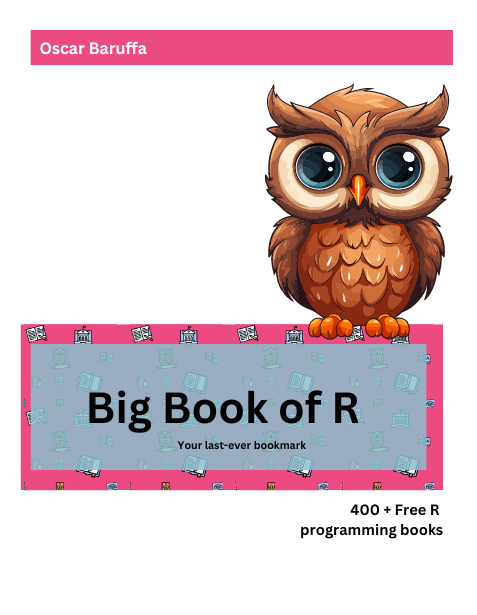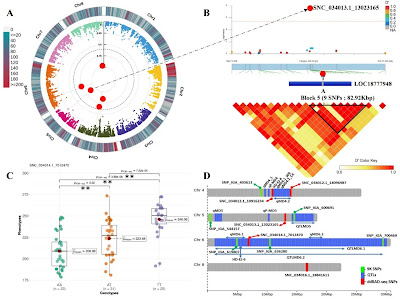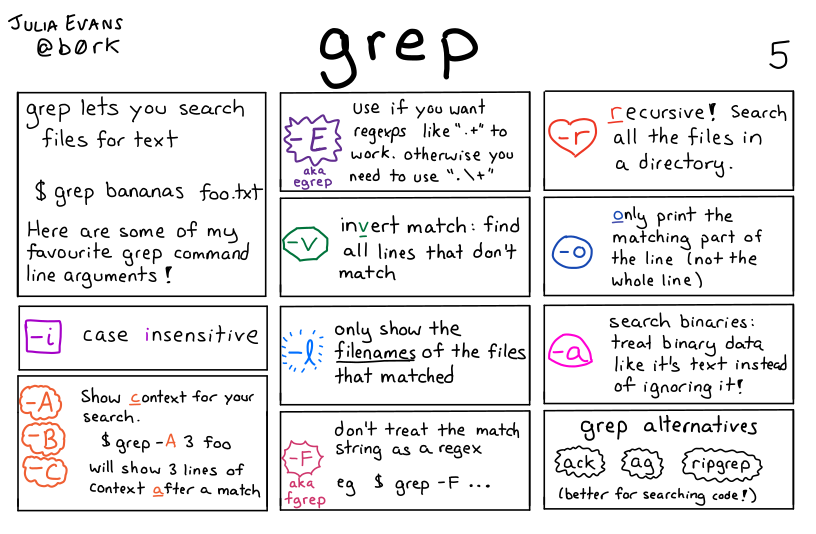Hola, hace unos días necesitaba obtener todas las secuencias de genes de pimiento (Capsicum annuum) de la colección 'gene' del NCBI (que tan mal lo está pasando en 2025). Para ello abrí el navegador y obtuve una lista de 48K identificadores (gene-id) en https://www.ncbi.nlm.nih.gov/gene?term=capsicum%20annuum%5BOrganism%5D

Descargué el fichero y lo hice no redundante de esta manera:
$ head -3 gene_result.txt | cut -f 1-6
tax_id Org_name GeneID CurrentID Status Symbol
4072 Capsicum annuum 107859632 0 live LOC107859632
4072 Capsicum annuum 107868427 0 live LOC107868427
$ cut -f 3 gene_result.txt | sort -u | grep -v Gene > pimiento.geneids.txt
Descubrí que obtener la lista de genes es fácil, pero no tanto sus secuencias. Por ejemplo no lo logré con https://www.ncbi.nlm.nih.gov/sites/batchentrez , me daba secuencias que no eran de pimiento, supongo que por esperar otro tipo de identificadores. Entonces pedí ayuda en https://support.nlm.nih.gov/support/create-case y tras unos días de espera me dirigieron amablemente a la documentación de la herramienta datasets del NCBI, y me compartieron la siguiente figura:

Me descargué el binario datasets para linux de https://www.ncbi.nlm.nih.gov/datasets/docs/v2/command-line-tools/download-and-install y lo utilicé de esta manera:
$ chmod +x datasets
# probamos primero con un gen de ejemplo
$ ./datasets download gene gene-id 20217883 --include gene,protein
Collecting 1 gene record [================================] 100% 1/1
Downloading: ncbi_dataset.zip 3.24kB valid data package
Validating package files [================================] 100% 5/5
$ unzip ncbi_dataset.zip
Archive: ncbi_dataset.zip
inflating: README.md
inflating: ncbi_dataset/data/gene.fna
inflating: ncbi_dataset/data/data_report.jsonl
inflating: ncbi_dataset/data/dataset_catalog.json
inflating: md5sum.txt
$ head ncbi_dataset/data/gene.fna
>NC_024624.1:447314-449261 rrn18 [organism=Capsicum annuum] [GeneID=20217883] [chromosome=MT]
ATCATAGTCAAAAGAAGAGTTTGATCCTGGCTCAGAAGGAACGCTAGCTATATGCTTAACACATGCAAGT
CGAACGTTGTTTTCGGGGAGCTGGGCAGAAGGAAAAGAGGCTCCTAGCTAAAGGTAGCTTGTCTCGCCCA
GGAGGTGAGAAGAGTTGAGAACAAAGTGGCGAACGGGTGCGTAACGCGTGGGAATCTGCCGAACAGTTCG
GGCCAAATCCTGAAGAAAGCTAAAAAGCGCTGTTTGATGAGCCTGCGTAGTATTAGGTAGTTGGTCAGGT
AAAGGCTGACCAAGCCAATGATGCTTAGCTGGTCTTTTCGGATGATCAGCCACACTGGGACTGAGACACG
GCCCGGACTCCCACGGGGGGCAGCAGTGGGGAATCTTGGACAATGGGCGAAAGCCCGATCCAGCAATATC
GCGTGAGTGAAGAAGGGCAATGCCGCTTGTAAAGCTCTTTCGTCGAGTGCGCGATCATGACAGGACTCGA
GGAAGAAGCCCCGGCTAACTCCGTGCCAGCAGCCGCGGTAAGACGGGGGGGGCAAGTGTTCTTCGGAATG
ACTGGGCGTAAAGGGCACGTAGGCGGTGAATCGGGTTGAAAGTGAAAGCCGCCAAAAACTGGCGGAATGC
# ahora con gene-ids del fichero que preparamos antes, tarda, ncbi_dataset.zip > 100MB
$ ./datasets download gene gene-id --inputfile pimiento.geneids.txt --include gene,protein
$ unzip ncbi_dataset.zip
Archive: ncbi_dataset.zip
inflating: README.md
inflating: ncbi_dataset/data/gene.fna
inflating: ncbi_dataset/data/protein.faa
inflating: ncbi_dataset/data/data_report.jsonl
inflating: ncbi_dataset/data/dataset_catalog.json
inflating: md5sum.txt
$ head ncbi_dataset/data/gene.fna
>NW_025826840.1:c5280-2277 LOC124890618 [organism=Capsicum annuum] [GeneID=124890618] [chromosome=Un]
GGAGGTACTTAAAGCATGACTTTTAAAAGTTTGCATAGGGCAAGAAGCAGGAGTGTGACTAAACTGATTT
TTCTTTCTGGTTTTAAGCATGATGCTATTCCTCAGCGTCCTCAAAATGAGCAAATTGAAAAGCTCAAGAA
GTTCAAGGCTGTGTTGGAACGCATTCTGATTTTCTTGCAGCTCAATAAGCATGACATTCAGCTTACTCAC
AAGGAGAAGTTGTGTTCGGTTGAGAGGCACATAGGTTTCTTTCTTAGCAAGCCTACTTCTCCTCCTCTGC
AGGGGCAACTTCCTCAGTCTTCCATGCAGCTTCAGCAACCACAATCACTTGATGTTCAAACTAATCCACC
GATGCAACCTCAACTTCATCAGGCACTATCTTCGCAGGTACGTCATCAACATTTTAATCCACTATTATCA
TTTCTGGAGGCAATTCTACCAATTGTATGGTGCATCATGCTGGATTTACTAAATTTTGATACTATAAAAG
GTCTCTTGACAAACAGCTAGCCAAATGTGTCAGTCGTCATTGAAAGTTCTGCTACCGTTTAGTTTCTTTT
TCTCCAATGTCTTTTGTTACACTTGTTTTGTATATTACTATATTGTTGGCTCTTTTTCTTTCTTTTGATC
$ head ncbi_dataset/data/protein.faa
>XP_047258369.1 LOC124890618 [organism=Capsicum annuum] [GeneID=124890618]
MTFKSLHRARSRSVTKLIFLSGFKHDAIPQRPQNEQIEKLKKFKAVLERILIFLQLNKHDIQLTHKEKLC
SVERHIGFFLSKPTSPPLQGQLPQSSMQLQQPQSLDVQTNPPMQPQLHQALSSQAQSTGALQTATLDSDS
TSQTGNADGADWQEELYQEIKTMREKNLPELNALYQKIASKVQQHDAIPQRPQNEQIEKLKMFKAVLERI
LIFLQVNKHDIQLTHKEKLCSVERHIGFFLSKPTSPPLQGQLPQSSMQLQQPQSLDVQTNPPMQPQLHQA
LSSQAQSTGALQTATLDSDSTSQTGNADGADWQEELYQEIKTMRDKNLPELNA
>XP_047259376.1 LOC124891834 [organism=Capsicum annuum] [GeneID=124891834]
MTSNITESLNSILRDEREYPVASIFNSIAPRFGEIFRKRYAEVDNSKTTFIPVAETILRENMTKGDKLYV
NNINESTNEFTVLGYGRSAKVNLSRQPCSCRKYDLVKLPCAYTMAALHLKHGDEYGTSIYKNPFQIYSKE
SYLLAYLEPICAAPLESEWSVAREYLEIQVLPPDVDPKHGRRKVKHVKGVLEPSRYKKRNKCSKCKRLGH
Hay muchas otras maneras de utilizarlo y ejemplos en https://www.ncbi.nlm.nih.gov/datasets/docs/v2/how-tos
Hasta pronto, Bruno




